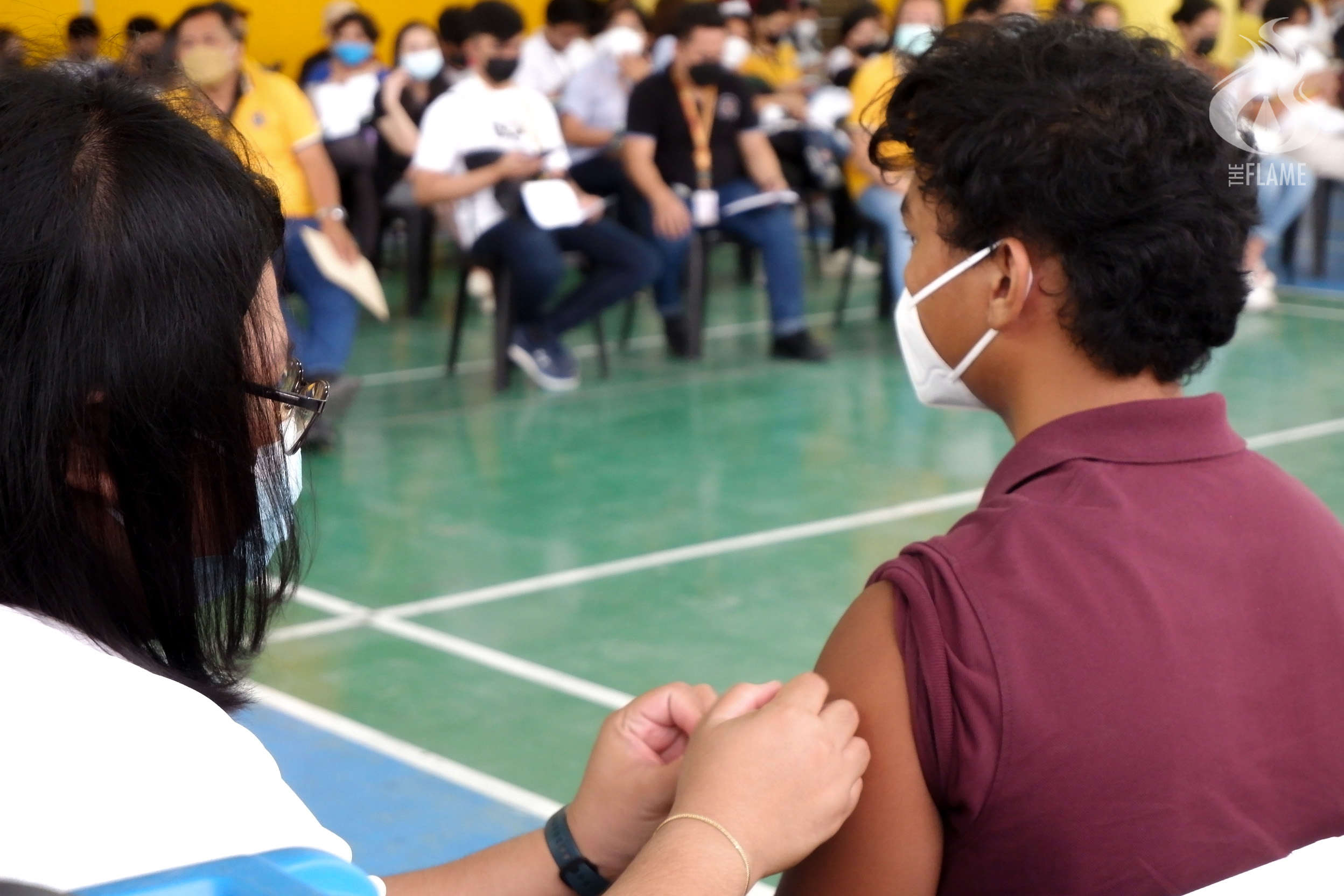
BREATHE IN, breathe out. These were the things that Marilen Balolong, a University of the Philippines Manila microbiology professor, did freely one calm morning while jogging around their neighborhood in Alabang.
With no one around in sight, Balolong freely inhaled the morning breeze without the inconvenient mask the COVID-19 pandemic forced people to wear.
While people like Balolong have to ensure that an area is not that crowded before removing their face masks, it wasn’t that bad compared to the situation two years ago. Back then, people had to wear both face masks and face shields to protect themselves. The face shield requirement was then lifted, making it easier for people to move around.
On Oct. 28, 2022, President Ferdinand Marcos Jr. signed Executive Order No.7, which made the wearing of face masks indoors and outdoors voluntary, with a few exceptions like health facilities and public transport. But health experts are encouraging the public to continue wearing face masks, noting that the pandemic is not yet over.
Pandemic, lockdown, personal protective equipment. The year 2020 certainly introduced some new vocabulary. Although maladies came and went, phrases and terms such as these dominated the everyday lives of people globally.
While they are not exactly new words, these terms today quietly live with us, waiting for the right time to be used.
The life of a pandemic
A pandemic is a term used to describe a disease that has been occurring on a global-scale. Balolong says epidemiologists use terms like pandemic to understand each other.
“Pandemic is one of the many names. You hear about outbreaks, you hear about incidences when you say pandemic, it covers quite a huge area of impact already[…] which is the case for COVID-19 now,” Balolong said.
Elfritzson Peralta of the UST biological sciences department said there are phases identified by the World Health Organization (WHO) to consider a disease a pandemic.
“It has to start from an infection[…] then a larger scale of outbreaks, the rate of transmission, [the] scale of infection, all consistent with the phases from WHO, then we can consider one to be a pandemic,” Peralta said.
When a pandemic starts, at some point it also ends, just not quite how it is expected to be. In the transition out of a pandemic, a zero case is not the end of a pandemic, but rather how the number of deaths to cases impacts a society by overwhelming a health system, according to Balolong.
The end of a pandemic, Peralta noted, is based on the severity of infection, its transmission rates, and the immunization rates.
Re-emergence
Some diseases, such as viruses, do not stay dead. They hide in the surroundings lying low.
“There is a possibility that diseases ‘re-emerge’, if it is still in the environment, they can mutate, choose a host, and be transmitted. It’s one of the concerns now in medical microbiology, the re-emerging ones,” Balolong said.
The health department has refused to declare the COVID-19 pandemic as reaching the endemic stage, citing the low booster coverage and the emergence of sub-variants.
“Endemicity will come soon but as of now it is quite uncertain because of the low booster coverage and the effect of sub-variants in the population,” Vergeire said in a recent briefing.
Vergeire said COVID-19 must be under control and its fatalities should be kept to a minimum before one can say that it is already endemic or as common as measles or dengue fever.
There are also some viruses that Balolong would like to call “dating mabait (formerly good ones),” which are viruses that, over time, develop the tendency to be harmful.
“Some virus gets back with a vengeance. When they get back, they’re not naive anymore, they know what to do. They’re better or they’re worse—and we’re not ready,” Balolong added.
To understand why such a phenomenon happens, Peralta emphasized the anthropocene or how human activities influence disease occurrence and recurrence, saying it increases when people interact with animals—may it be through hunting, collecting, or consuming.
“We always highlight the one health; our connectedness and interaction among the three health systems: human, environment, and animal health, that increases the tendency to acquire diseases,” Peralta said.
Viruses are like particles that are everywhere. Most of them are not harmful unless disturbed.
“The challenge with viruses is once they are inside the hosts, they borrow its machinery and they learn to do many things, one of which is to cause infection,” Balolong said.
However, Balolong said that it is not the virus’ fault, for this is in their nature. Infection is a consequence and is part of a cycle, but this wouldn’t be a problem if we just let them be.
Beyond negativities
It is no secret, however, that the environment was able to breathe when people had to be locked inside their homes during the onset of the pandemic.
“Definitely the world during 2020 had to pause, and when we did that pause, a number of observations have been made in terms of decreasing emissions on carbon dioxide and other greenhouse gasses that are usually high in various regions,” Peralta said.
Peralta said that those countries that experienced lockdown have observed the “positive effect” of the pandemic, in terms of global warming.
“However, these things cannot just reflect the current situation… when it comes to climate change, it is part and parcel of the consequences, and the contributions of the pandemic,” Peralta said.
But Peralta also clarified that everyone should also expect the climate to change over time.
“In the decades that we have observed climate, it is not novel for it to change, what is notable, is the rate of change. Hence, we prefer to call it the climate crisis,” Peralta said.
According to Peralta, the climate crisis is the rate of how climate change exceeds the expected rate of how it should change, wherein living components of the earth cannot keep up to the change it brings.
The initial phase of the COVID-19 pandemic had made things quiet for a while. But as time passed with the increase in production of personal protective equipment (PPEs), the pandemic also became one of the causes for increased greenhouse gas emissions.
Climate change link
Although pandemics are expected to occur with or without climate change, Peralta said climate change accelerates the chances of its occurrence.
“As long as there is human to animal interaction, and there’s unsustainable development among the environment and animal health systems, climate change can accelerate resurgence of certain diseases,” Peralta said.
Balolong said the connection between climate change and pandemics does not happen overnight.
“It is probably something that happens through time. It’s like when something’s cooking, and the climate change triggers it, mostly through zoonotic means. It can be five to ten years in the making, we never know,” Balolong said.
Balolong furthered that many things can happen in a medium span of time, and one culprit is climate change.
“You might want to imagine, if we are gonna close the COVID-19 pandemic by 2024, as expected by the experts… What new pandemic should we expect by 2024? And how did climate change contribute to that?” Balolong said.
Masks on? Masks off?
Despite the relaxation of COVID-19 restrictions lately, Balolong urged everyone to remain mindful of the minimum health protocols.
“Minimum health protocols are free, just wash your hands regularly. It is the easiest, cheapest, and most hygienic preventive measure to avoid infections,” Balolong said.
Along with this, Balolong advises that additional protocols such as wearing face masks and vaccination should be implemented correctly.
“We must know why we use face masks, it is not just about being tasked to do so. The advocacy should pair up with the policy, if face masks should not be mandatory anymore, there should be a precautionary statement,” Balolong said.
To avoid the worldwide use of face masks and other PPEs that contribute to the climate crisis, Peralta said another pandemic must be prevented from happening
“We must delay it, otherwise, we are again forced to use and produce a number of disposable PPEs that increases our waste disposal to the environment,” Peralta said.
He noted that in other countries, especially the pre-pandemic developed nations, using face masks becomes part of their daily lives “to avoid transmissions even with regular flu.”
“One or two in the society who would use face masks to avoid transmission would not hurt the environment, not to mention we might prevent another pandemic from happening while we are still under one,” the biology educator said. F – K.C. de Leon
Editor’s note: This article was originally published in Vol. 58, Issue No. 1 of the Flame. View the entire issue through this link: https://issuu.com/abtheflame/docs/1st_issue_2022-2023_v8



